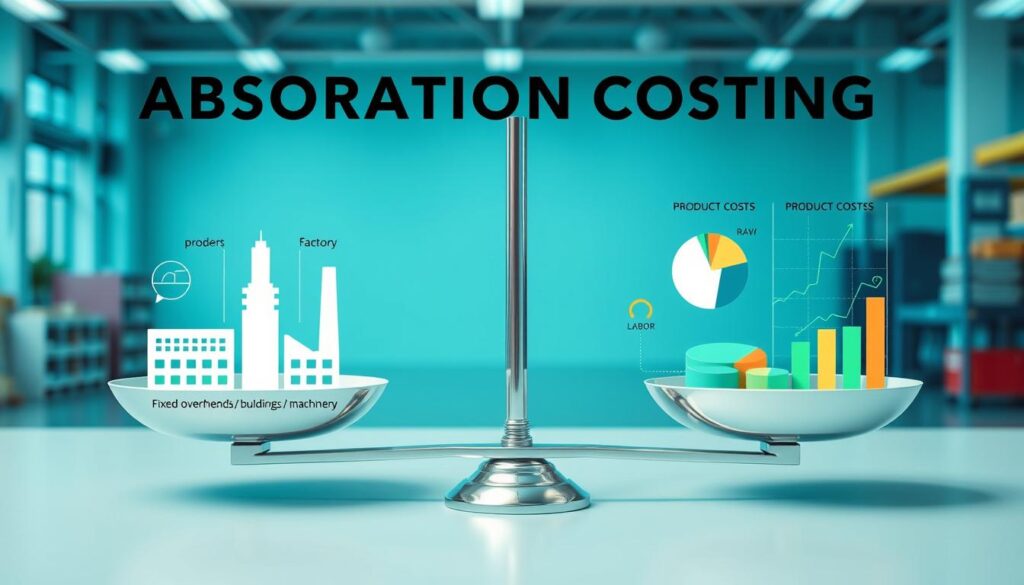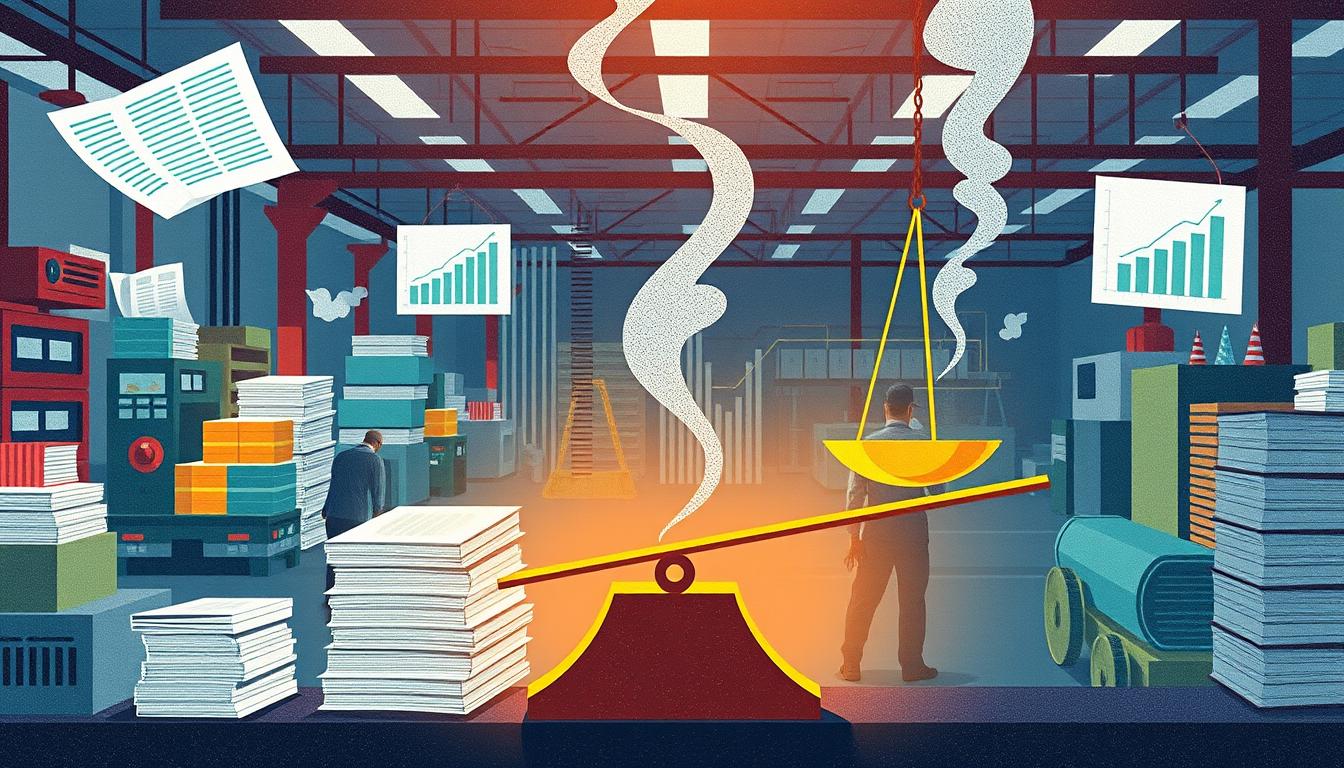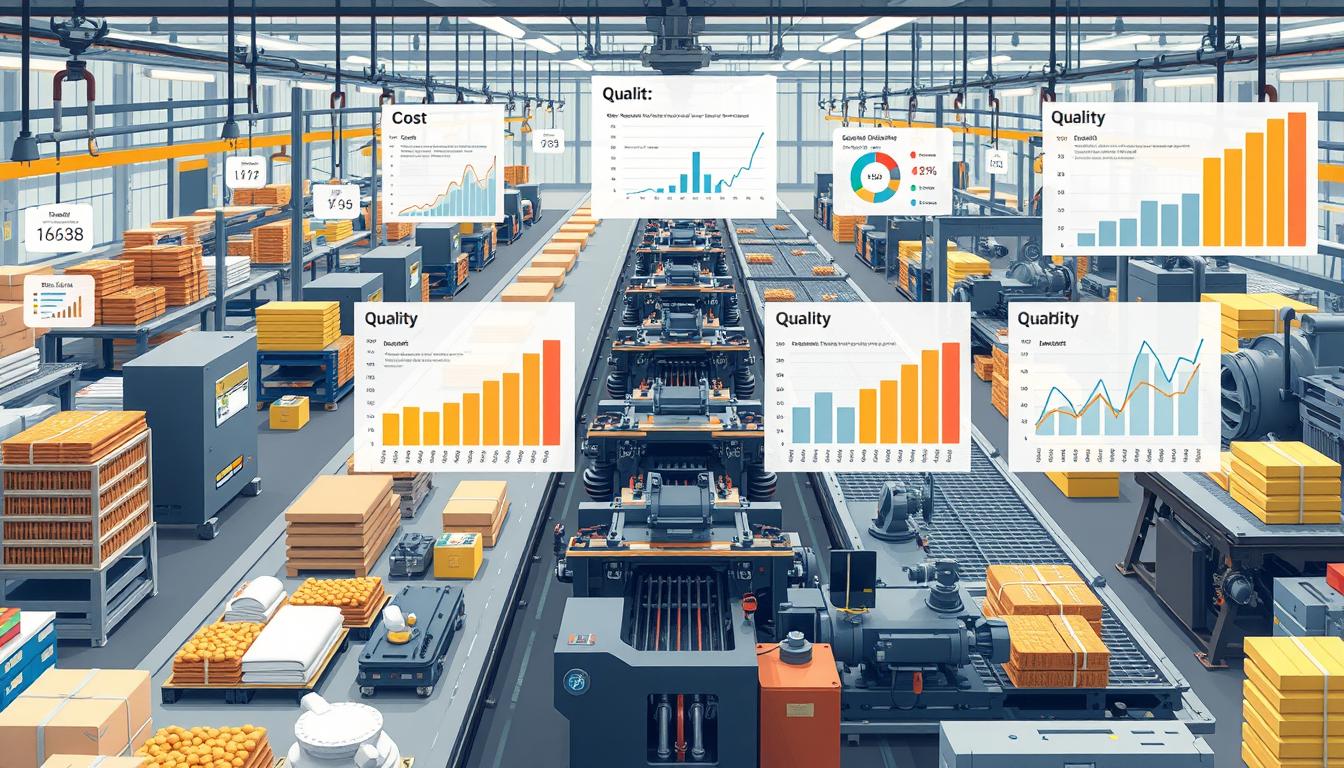Picture yourself in a busy factory, amid the hustle and buzz of activity. You hear machines humming and workers talking, all working together. At the center of this activity, there’s a complex set of costs that are crucial yet can be overlooked. These costs range from raw materials to labor and operational expenses, all playing a vital role in keeping the factory running smoothly. Just like optimizing these processes can increase productivity, finding small ways to boost your daily energy can also help you power through your day more effectively. Whether it’s through better nutrition, regular breaks, or a more organized routine, maintaining your personal “energy budget” is just as crucial as managing the factory’s costs.
Absorbed fixed overhead costs are an important part of your manufacturing expenses. They’re not just numbers but a key piece in your business’s financial health. Knowing these costs helps you understand all your expenses better. This knowledge lets you make smarter choices to boost your profits. As you look into overhead costs, think about their impact on your profit margins and how they fit into absorption costing in manufacturing.
Key Takeaways
- Absorbed fixed overhead includes indirect costs like rent, utilities, and depreciation.
- It’s crucial for accurate financial reporting under GAAP and IFRS standards.
- Understanding these costs helps clarify pricing strategies and inventory management.
- Absorption costing affects both income statements and balance sheets significantly.
- Decision-making regarding production must consider how overhead costs are absorbed.
Definition of Absorbed Fixed Overhead Costs
It’s crucial to grasp what absorbed fixed overhead costs mean in manufacturing for better financial control. These are the constant costs not affected by how much is produced. They cover big expenses like rent, the wages of the production team, and utilities. These expenses are a big part of manufacturing costs. They must be managed well for correct pricing and to figure out profits.
What Are Fixed Overhead Costs?
Fixed overhead costs are the indirect expenses that stay the same, no matter how much you produce. These can be hefty and usually include things like:
- Rent or lease payments for facilities
- Salaries for key management personnel
- Utilities such as electricity and water
- Depreciation of machinery and equipment
Keeping track and rightly assigning these costs is crucial. They play a big part in setting the cost of what’s made. With absorption costing, businesses can spread these fixed costs across their products. This makes financial reports more accurate.
Importance of Absorption in Accounting
Absorption costing is key in accounting because it requires including fixed overhead costs in product costs. This is in line with accounting rules for precise financial reporting. The effects of this method matter a lot:
- Absorption costing raises the value of ending inventory on balance sheets.
- Because ending inventory is up, expenses on the income statement are lower.
- Overall net income looks higher, showing a fuller picture of the costs of goods sold.
By adopting absorbed costs, companies can make their financials match generally accepted accounting principles (GAAP). This is vital for more accurate financial statements. It helps in smarter financial management and aids in making big decisions for businesses.
What Is Absorbed Fixed Overhead?
Understanding absorbed fixed overhead is about getting to know absorption costing. This approach, also known as full costing, looks at all the costs of making a product. It counts both the direct costs and the indirect overhead costs. This gives a fuller picture of what it costs to make something. Learning about absorption costing helps you understand its effect on financial reports and making business choices.
Overview of Absorption Costing
Absorption costing adds all manufacturing costs into the price of products. This is key for properly allocating costs. The method includes:
- Direct materials
- Direct labor
- Variable manufacturing overhead
- Fixed manufacturing overhead
It’s different from variable costing, which leaves out fixed overhead costs from per unit costs. By including all costs, companies get a real view of profits. Yet, higher inventory levels can make net income look bigger than it might really be.
Key Principles of Absorption Costing
The main ideas of absorption costing focus on adding manufacturing costs to products made in the accounting period. This is true whether the products are sold or kept in inventory. Some important points are:
- Comprehensive Cost Inclusion: Make sure products absorb all manufacturing costs. This includes direct and indirect costs, making prices more reflective of true costs.
- Fixed Cost Allocation: Spread fixed production overhead based on what the production facilities can normally handle. This keeps reports accurate.
- Variance Analysis: It’s important to check if actual overhead costs are different from expected. This helps in understanding cost variances.
- Addressing Variances: Deal with under- or over-absorption properly. This is vital for making smart financial choices.

Grasping these key points lets you deal with the tricky parts of manufacturing costs. It also builds a strong base for your business’s financial planning.
Examples of Absorbed Fixed Overhead Costs
Learning about absorbed fixed overhead costs helps understand how firms like TOPCO handle their manufacturing overhead. This part gives examples and principles of fixed overhead allocation. It shows its financial impact.
Case Study: TOPCO’s Production Costs
TOPCO’s way of budgeting for absorbed overhead is a good example. They set a fixed manufacturing overhead budget of $2,000,000 for the year. They plan for 100,000 machine hours. This means their absorption rate is $20 per machine hour.
If they use more or less machine hours than planned, it affects their finances. TOPCO might end up absorbing too much or too little overhead.
General Illustration of Fixed Overhead Allocation
Let’s look at a simple example of fixed overhead allocation. Picture a company budgeting $10,000 for overhead, expecting to make 1,000 units. This sets a rate of $10 per unit. Shifts in production can cause over or under absorption.
Reasons for these variances include changes in costs or production processes, not meeting predicted labor hours, seasonal expense changes, or miscalculations.
- Incurred costs differing from what was forecasted, often due to changes in production processes.
- Changes in the basis of application, such as fewer direct labor hours than anticipated.
- Seasonal fluctuations affecting overhead expenses.
- Errors in calculation related to the allocation basis.
It’s key to know how these costs affect financial statements. Using absorption costing, fixed overhead is spread across each unit produced. If a company spends $20,000 in fixed overhead and makes 10,000 widgets, each widget includes an extra $2. This can lead to a higher net income since more costs go into the ending inventory. Managing these costs well is crucial for a company’s profits.

| Description | Example | Impact |
|---|---|---|
| Absorption Rate | $20 per MH (for TOPCO) | Influences product costing and pricing |
| Overhead Under Absorption | Actual costs exceed budgeted | Increases cost of goods sold |
| Overhead Over Absorption | Actual costs are less than budgeted | Reduces cost of goods sold |
These aspects are crucial in financial management. They show how absorbed overhead interacts with fixed manufacturing costs and overall business finance.
Advantages and Disadvantages of Using Absorption Costing
It’s important to know the pros and cons of absorption costing for those dealing with financial reports and cost analysis. This method gives a full view of what it costs to make a product, offering both good and bad points.
Pros of Absorption Costing
This method follows the rules set by GAAP, which is great for reports that go outside the company. It takes into account all costs related to making a product, like rent and insurance. This gives a complete look at how profitable a product is. Here’s why it’s good:
- Comprehensive cost allocation: It includes all costs tied to a product, helping in smart decision-making.
- Meets external reporting requirements: It’s accepted by groups that check financial reports.
- Ease of understanding: Its simple approach lets you see the full costs per product easily.
- Reflection of fixed costs: It spreads out costs over products, which helps figure out profit.
- Facilitates accurate revenue calculations: It adds both variable and fixed costs in.
- Inventory valuation: Shows the full cost of making a product by including fixed overhead.
Cons of Absorption Costing
On the flip side, absorption costing has downsides too. These issues can make financial numbers and reports confusing, leading to mistaken ideas about profit:
- Distorted cost data: If you make more or less product, it can mess up your numbers.
- Insufficient decision-making information: It doesn’t offer as much detail as variable costing does.
- Inaccurate reflection of incremental costs: Adding in fixed overhead can give the wrong idea about the cost of making more products.

| Aspect | Advantages | Disadvantages |
|---|---|---|
| Compliance | Meets GAAP for external reporting | Might mislead about true profitability |
| Cost Coverage | Covers all production costs | May distort actual costs due to volume changes |
| Decision Support | Facilitates clear revenue calculation | Offers less insight for operational efficiency |
| Inventory Valuation | Aids in accurate product pricing | Inaccurate reflection of cost data can occur |
Understanding the pros and cons of absorption costing helps with smarter decisions on financial reports and managing strategies.
Implications of Over and Under Absorption of Fixed Overhead
It’s vital to grasp the effects of over and under absorption for cost control. These situations impact your finances and influence business strategy.
Understanding Over Absorption Scenarios
Over absorption happens when actual production surpasses expected levels. Consider a company planning for 600,000 machine hours but ends up with 600,560. This causes too much fixed overhead to be allocated. The calculation of the overhead absorption rate (OAR) is key here. It was previously set at £0.53 per machine hour for production tasks and £7.17 for every labor hour in finishing. This leads to a temporary boost in profit, where £318,297 of overhead was recovered in production against an actual £318,542 spent. However, this can make financial reporting less clear and complicate managing costs.
Dealing with Under Absorption Situations
Under absorption comes into play when production doesn’t reach planned levels. Let’s use the same example, where the actual labor hours for finishing work were 17,800 instead of the budgeted 18,000. This discrepancy resulted in overhead not being fully absorbed. This situation can lower profits and necessitates a revisit of cost management strategies. Increased costs for indirect materials or inefficiencies in labor are often to blame, accounting for half of the total unabsorbed overhead. To tackle under absorption, adjustments to overhead rates and better production forecasts are usually required, aiming for more precise future financial reports.
| Over and Under Absorption Metrics | Production | Finishing |
|---|---|---|
| Budgeted Machine Hours | 600,000 | – |
| Actual Machine Hours | 600,560 | – |
| Budgeted Labor Hours | – | 18,000 |
| Actual Labor Hours | – | 17,800 |
| Overhead Recovered | £318,297 | £127,626 |
| Actual Overheads Allocated | £318,542 | £127,250 |
| Under Absorption | £245 | £376 |

Conclusion
Understanding absorbed fixed overhead is key for good financial management. By using absorption costing, you get a better view of your manufacturing costs. This ensures all costs are fully covered in your product pricing.
This method helps set prices right and keeps you in line with accounting rules. It makes your financial reports trustworthy. Knowing about over and under absorption is crucial. It helps you manage costs better.
By keeping track of costs carefully, you can make smart choices for your business. Mastering absorbed fixed overhead improves your financial health. It helps your company make more money and run smoother.
When dealing with financial management in a tough market, good absorption costing is vital. It helps you make smart decisions. Stay up to date with cost accounting standards to lead in the manufacturing world.








